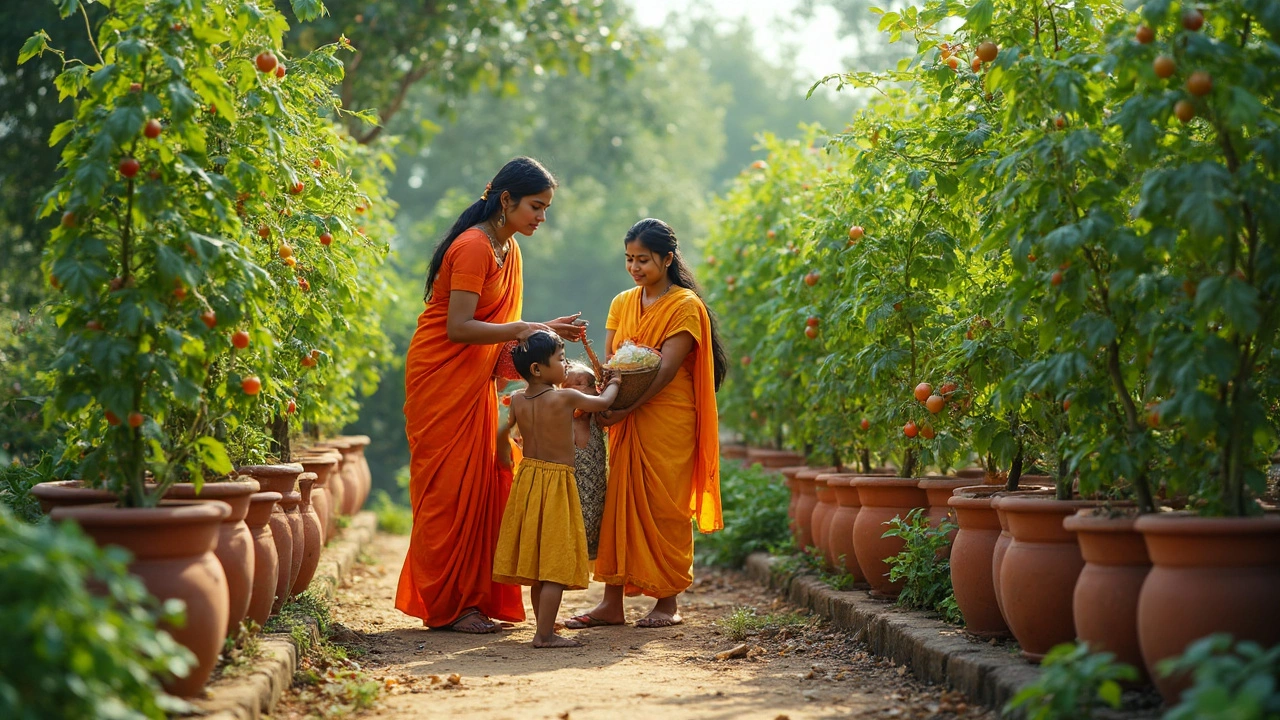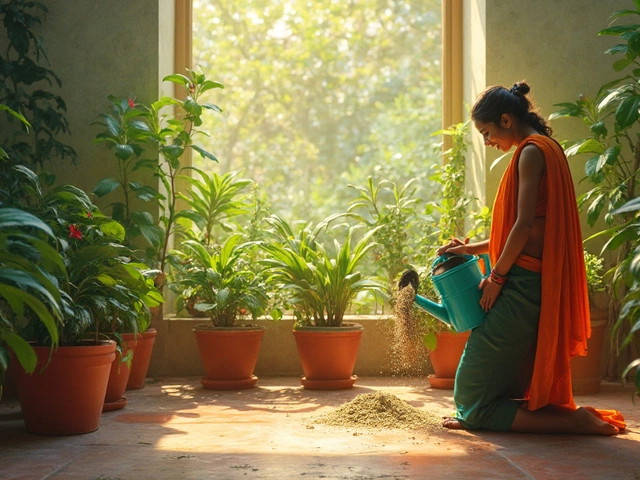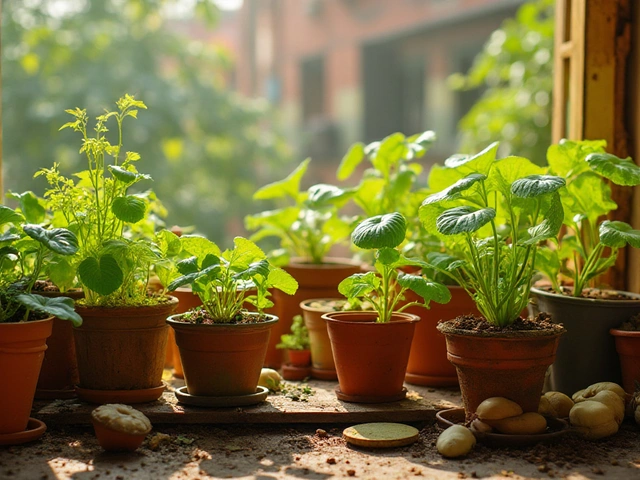Tomato Growing Tips for Indian Gardens
Thinking about growing juicy tomatoes at home? You don’t need a fancy farm – just a bit of soil, sunshine, and the right know‑how. Below are the steps that make tomato planting easy, even if you’re a beginner.
1. Pick the Right Variety and Timing
India’s climate varies a lot, so choose a variety that matches your zone. In hot coastal areas, go for heat‑tolerant types like Rashmi or Arka Vikas. In cooler hills, cherry tomatoes such as Sun Gold perform well. Plant seedlings after the last frost; in most parts of India that means late February to early March for north, and June‑July for monsoon‑prone zones.
2. Soil Prep and Planting
Tomatoes love well‑drained, loamy soil with a pH of 6.0‑6.8. Add a good amount of compost or well‑rotten farmyard manure – about 2‑3 kg per square metre – to improve fertility and structure. Make a hole 2‑3 cm deeper than the root ball, place the seedling, and gently firm the soil around it. Space plants 45‑60 cm apart to allow airflow and easy pruning.
Mulching with straw or dry leaves helps retain moisture, keeps weeds away, and keeps soil temperature stable. This is especially useful during the hot summer months when water evaporates quickly.
3. Watering and Feeding
Consistent watering is key. Tomatoes need about 2‑3 liters per plant each day during fruit set, but avoid soggy roots. Drip irrigation or a soaker hose works best – it delivers water right to the base and saves a lot of waste.
Feed the plants with a balanced NPK fertilizer (10‑10‑10) once every 3‑4 weeks. When the first fruits appear, switch to a high‑potash formula (like 5‑10‑20) to boost flavor and size.
4. Support and Pruning
Most Indian tomato varieties are indeterminate, meaning they keep growing tall. Use stakes, cages, or bamboo poles to keep vines upright. Tie the main stem gently with soft rope or cloth strips.
Prune the suckers – the small shoots that appear between the main stem and a branch. Removing them reduces crowding, improves air flow, and directs energy to the fruit.
5. Pest and Disease Management
Common pests include aphids, whiteflies, and the dreaded tomato fruit borer. A quick spray of neem oil or a soap solution can keep them under control without chemicals.
Watch out for blight and wilt. Planting disease‑resistant varieties, rotating crops, and keeping foliage dry by watering at the base all lower risk. If you spot early signs, remove affected leaves and treat with a copper‑based spray.
6. Harvesting
Tomatoes are ready when they turn fully red (or the colour specific to the variety) and feel firm but slightly yielding to gentle pressure. Pick them early in the morning for the best taste.
Don’t wait too long – over‑ripe fruits can split or attract pests. A regular harvest also encourages the plant to produce more fruit.
With these simple steps you can grow tasty, healthy tomatoes in any Indian garden. Remember, the secret is consistent care, the right variety, and a bit of patience. Happy planting!

How Often Should I Fertilize Tomatoes? Simple Timing for Big Harvests
Getting the timing right for fertilizing tomatoes can mean way more fruit and fewer plant headaches. This guide breaks down exactly when and how often tomatoes need feeding to keep them healthy and productive. You'll learn how to spot the signs that your tomatoes are hungry, and avoid common fertilizer mistakes that kill yields instead of boosting them. We’ll also look at quick, practical tips to handle real garden situations, like container tomatoes or tricky soils. Tomato success starts with the right feeding routine—and you’ll find all the need-to-know details here.
About
Soil Improvement
Latest Posts


Adding the Right Ingredients to Water for Thriving Indoor Plants
By Alden Thorne Mar 5, 2025

Best Plants for Indian Summer: Top Choices for Surviving Heat & Drought
By Alden Thorne Jul 9, 2025

Two Drawbacks of Green Roofs You Should Know
By Alden Thorne Oct 8, 2025
